Saint Kentigern has been venerated for many centuries as one of the apostles of Scotland and patron-saint of Glasgow. He is best known in Scotland as Mungo, which means "darling", or "beloved one". Unfortunately, very little genuine information on this 6th-century saint has survived. His later life was composed by a Cistercian monk, Jocelyn of Furness, late in the 12th century, but earlier traditions about the saint are more authentic.
The future saint was born in about 518 or 528 in Culross in Scotland. His mother was the holy princess Theneva, who is also venerated as patron-saint of Glasgow, and a Russian Orthodox parish in Edinburgh is dedicated to her. From his childhood St. Kentigern became a disciple of St. Serf, a great missionary among the Picts, who gave him the second name "Mungo". Young Kentigern began to live a very austere ascetic life and decided to become a missionary as well. He first began to preach the Gospel in the Cathures region on the River Clyde, where the city of Glasgow now stands. The ascetic, following the Irish monastic tradition, fervently prayed day and night, kept a very strict fast and lived in extreme poverty in a tiny cell, where he slept on a rock. He often retreated to the River Clyde to pray there for several hours. With time, he was consecrated the first bishop of the Britons who lived in the small kingdom of Strathclyde (now the Strathclyde region on the River Clyde). The bishop worked very energetically, developing his large diocese, building many churches and monasteries. Specifically, he founded a church in Glasgow, which was later to become very famous. St. Kentigern served in Strathclyde for 13 years, converting local people to Christ by his preaching as well as by example of his holy life.
However, in the year 565 a strong pagan reaction began in that part of Scotland and St. Kentigern was exiled from the country for a while. According to the tradition, during the period of exile St. Kentigern first worked for several years in Cumbria, in present-day north-western England, with the city of Carlisle as its centre. St. Kentigern is remembered in a number of places in Cumbria to this day, in particular there is a Greek Orthodox missionary parish in the town of Keswick, dedicated to local saints: Sts. Bega, Mungo (Kentigern), and Herbert. Tradition says that after Cumbria, Kentigern travelled to Wales where he worked for some time with its patron—St. David, and then founded a great monastery in Llanelwy in north Wales, in the present-day county of Denbighshire. The first Abbot of Llanelwy after St. Kentigern was Saint Asaph, so, with time, the town where the monastery was situated became known as St. Asaph (as it is called to this day). It was recorded that 1,000 monks lived in this great monastery founded by St. Kentigern at the same time.
Finally, under the new king of Strathclyde, who supported Christianity, St. Kentigern was allowed to return to Scotland. On his return, the saint worked for some time in the place called Hoddom in the Galloway region in the south-west of the country (now the county of Dumfries and Galloway); he founded a monastery there, as well as at Ecclefechan in Dumfries. Then he made Glasgow his main missionary centre and episcopal see. A large community of monks and disciples grew around the bishop. Wherever the preacher travelled, he always erected crosses and built churches. The town (later city) of Glasgow began to rise around the church, or the monastery, established by St. Kentigern, and it can be said that the present famous city owes its existence to this saint in many ways. In the 12th century a magnificent Cathedral of St. Mungo appeared on the site of his original church in Glasgow.
St. Kentigern was much loved and venerated by the people for his gift of working miracles. Once he brought back to life a tame robin of St. Serf, which had been killed by jealous monks. Another time he miraculously lit a fire in St. Serf's monastery, which had earlier gone out. The saint also miraculously helped the Queen of Strathclyde find her wedding ring that she had accidentally lost. The King of Strathclyde accused her of unfaithfulness because of the loss of the ring and was going to execute her. But when the ring was found, through the prayers of St. Kentigern, in the stomach of a salmon caught in the river Clyde, her innocence was proved. St. Kentigern considered the venerable Columba of Iona as his close spiritual friend. The first meeting of these two great saints took place in the Scottish village of Kilmacolm (the present-day Inverclyde council area), where a church of St. Columba still stands in memory of the event. The last meeting of Sts. Kentigern and Columba was in 597, shortly before St. Columba's death, and then both saints exchanged their pastor's staffs. According to tradition, St. Kentigern, like many other Celtic saints, had his own bell; a replica of his original bell, made in the 17th century, is kept in Glasgow Cathedral to this day. Over the many years of his long life St. Kentigern devoted himself to the establishment of Christianity, monasticism and Church life in Scotland. The saint reposed in 612 (according to another, though less probable version, 603), aged about 85.
His veneration as a great missionary, wonderworker, builder of monasteries and enlightener of Strathclyde began immediately after his death. Pilgrims from all over the country flocked to his relics, which were enshrined in Glasgow Cathedral till the Reformation. Now this ancient Cathedral is Presbyterian, but it is still dedicated to St. Kentigern. The relics of St. Kentigern most likely lie in the tomb of the lower crypt of the Cathedral and are again being visited by numerous Orthodox and Catholic pilgrims; and at the back of the crypt there is an ancient holy well, connected with the saint. There is also a Russian Orthodox parish of St. Kentigern in Glasgow. All the parish churches (among them are several ancient ones) in Scotland, which bear the name of St. Kentigern, are officially dedicated to "St. Mungo". Many of them are situated in the places where the saint preached or built chapels and churches.
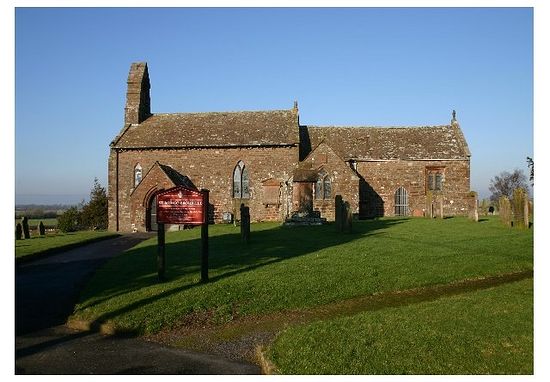 St. Mungo's Church in Bromfield, Cumbria.
St. Mungo's Church in Bromfield, Cumbria. Holy Hierarch Kentigern, pray to God for us!

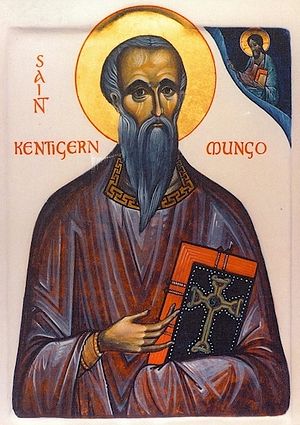
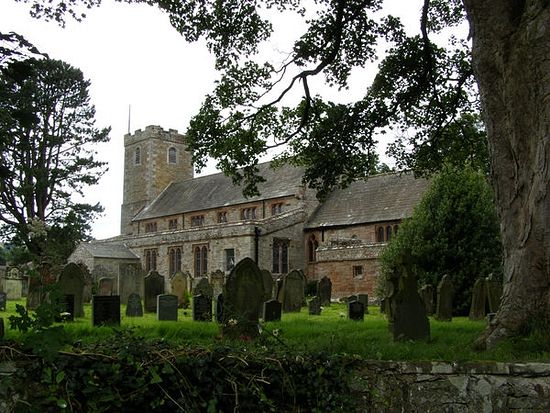
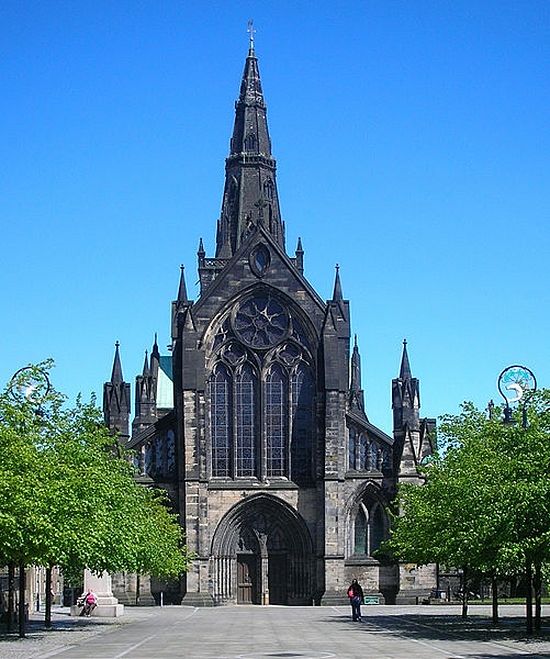
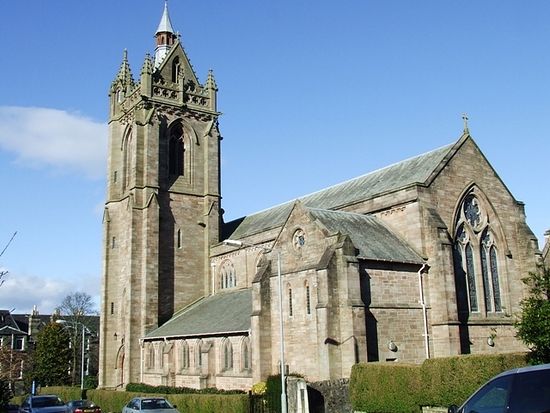
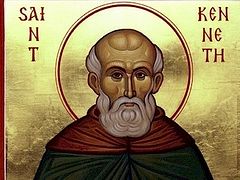
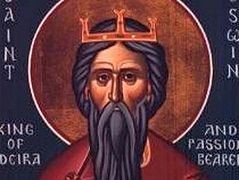
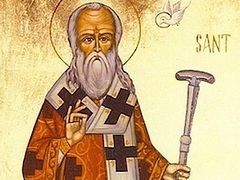
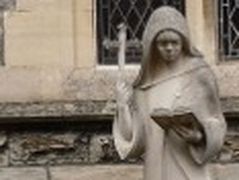
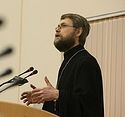
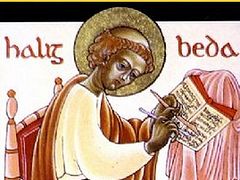
The parish priest is father George Evans. Parishioners are mostly British - wonderful people, real Orthodox. The church is visited also by Russians, Ukrainians, Bulgarians, Greeks, Romanians and other Orthodox people.Here is the site of the temple:
http://www.orthodoxdoncaster.co.uk/